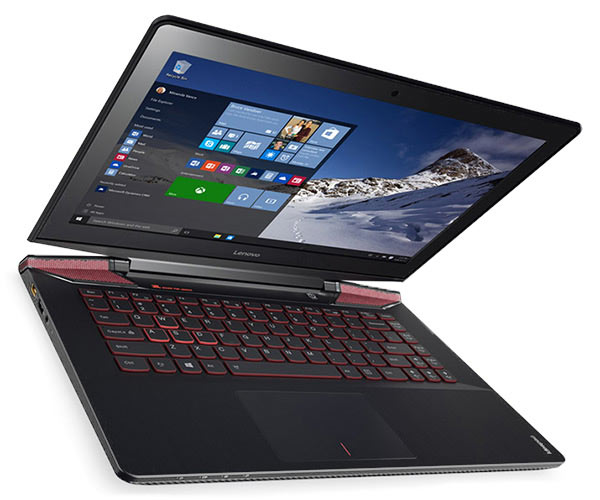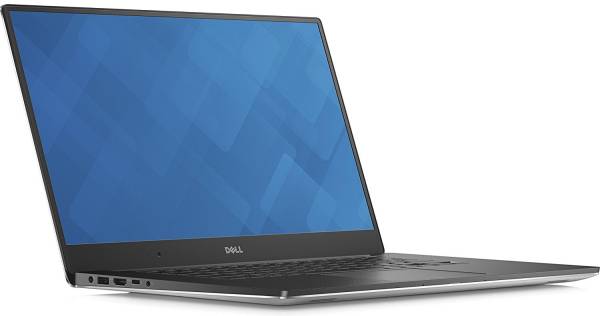Electrical engineering is a rewarding course of study, but no one who’s done it could tell you that it is easy. Most electrical power engineering students will have long study hours, have to attend numerous lectures, and will have to have a computer that can run crucial finite element method (FEM) simulations through finite element analysis (FEA) software. As a former student and current electrical power engineer, I find that many people don’t know what kind of laptop an electrical engineering student might need for their studies, which is why I’ve created this guide to help inform you about the best laptops for electrical engineering students.
What Kind of System You Should Seek Out
There are a plethora of great software solutions that electrical engineers can use in order to perform a wide variety of tasks. For example, Pannam.com has a great list of software options that are great to have in an electrical engineer’s toolbox. Outside of these options, I find that certain powerful software suites are integral to the electrical engineering experience, and there are definitely a lot out there to choose from that will tax your system.
These include many options from Siemens, like Simcenter 3D, NX Nastran, Femap, MATLAB, LMS Samtech, and Star-CCM. Each of these is designed to provide simulation options that can span a variety of electrical engineering applications and each can tax a standard system, which is why I recommend a fairly performant system for any student who is looking to pursue electrical engineering as a course of study.
>For example, the system requirements for Femap are
- Windows 7 64-bit or better
- A 64-bit processor
- 4 GB of RAM
- A True Color enabled video card that can display at least 16 million colors
- A display that is capable of a 1280 x 1024 pixel resolution
- For all options, 5.2 GB of hard drive space
- A large amount of storage space for model files
These are just the minimum system requirements, and while they might not seem that bad, you really should be running a system that has components that work well in excess of these. This is why you should truly consider avoiding a system that doesn’t perform well; simply put, this type of system will slow down your modeling and simulations, which could adversely affect your overall productivity.
Key Stats Look Out for These
Now that you know what type of system a typical FEA solution demands, you should look out for a system with these features.
A Strong Multi-Core Processor
When you are using an FEA to model and create simulations for power engineering for things like magnetic domain or electric machines, it’s important for you to have a system with a powerful processor. Processors run computations and processors with multiple cores will be able to run multiple computational processes simultaneously, so you can imagine that your modeling process will be greatly streamlined when you have a multi-core processor.
Typically, you really should consider quad-core processors on your laptop, but some dual-core units will do a decent job as well, which you’ll see in my review section. Additionally, and it might go without saying, but make sure your processor is a 64-bit chipset.
A Dedicated Graphics Processor
Some of the FEA applications out there will allow you to use an integrated graphical chipset for modeling, but in my opinion, you’ll be far better served grabbing a laptop with a dedicated Nvidia or ATI processor. These have a better and easier time pulling together 3D models for practical use in electrical engineering. The one caveat with a dedicated chip is that you’ll probably pay for it somewhat in battery life, but for applications like SolidWorks, which is great for designing electrical systems, you’ll appreciate a more powerful GPU. It also comes in handy if you like to mix electrical and mechanical engineering.
A Sizeable Display
As an electrical engineering student, you’ll probably get some programming experience. With this in mind, you’ll notice that the laptops that I’ve picked up for the reviews section are all over 14 inches. This is because a larger screen with a sharper display will make deciphering numbers and figures much easier. While I also believe that a laptop should be light and portable as a student, you don’t want to stymie yourself with a screen that you’ll have to heavily squint to work from.
Keyboard
You’re going to be typing – a lot. With this as a consideration, try your best to get a keyboard that is responsive and has keys that aren’t going to annoy you when you’re working on an assignment at 3 AM. Personally, I prefer a num pad; these allow me to quickly enter numbers into my software and the num pad also has a selection of ALT key presses that have come in handy for me on more than one occasion.
Portability
While this isn’t necessarily huge for a professional electrical engineer, having a lightweight laptop is very useful for an electrical engineering student. Your curriculum is going to be challenging, which means a lot of lectures, a lot of lab time, and a lot of study sessions, so why would you want a machine that’s going to break your back when you are trekking around campus? Since I’ve already explained the value of a good sized display, in my opinion, the best laptops for electrical engineering students will hover around the six-pound mark.
Laptop Reviews
HP ZBook 15u G2

See? You can get a pretty good laptop for electrical engineering without spending a huge amount of money. While you do have to sacrifice cores for the HP ZBook 15u G2, since it only has a dual-core processor, it does still incorporate an AMD FirePro GPU, which is designed for mobile workstations. This laptop has a good amount of modeling power and even has 8 GB of onboard RAM.
Its primary weakness, in my opinion, is that it’s slightly heavy at almost seven pounds, but if you need a good electrical engineering laptop that can run most applications, this is a great choice for a tiny amount of cash. Additionally, the battery only lasts about six and a half hours, which is okay, but many students might need a longer-lived battery.
Lenovo Y700

For a few dollars more, the Lenovo Y700 is a great option for an electrical engineering student. It has a quad-core processor, a dedicated Nvidia graphical chipset, and 12 GB of RAM. The first thing that you might notice is that this is actually a gaming laptop, which is fine because these types of laptops have the graphical and processing oomph that can work well when running modeling and FEA software. On top of this, an electrical engineering student will also be able to do some light gaming on it as well between studying sessions.
I love the fact that this laptop has a dedicated keyboard and it’s also a plus that this machine has a solid-state drive, which is just faster than the mechanical hard drives of yesteryear. The main drawback of this laptop is its nearly abysmal battery life; it only lasts a little over four hours under moderate load.
ASUS ROG GL752VW-DH74

Another laptop that’s designed for gaming but can also serve as a great electrical engineering rig is the ASUS GL753VE-DS74. Its processor has some great stats; it’s quad-core and has an impressive max turbo frequency of 3.80 GHz, which is perfect for just about any electrical engineering modeling. In addition to this, you can even double the already impressive 16 GB of RAM that this laptop comes with.
As a gaming laptop, it can even run some light virtual reality with its Nvidia Pascal GPU. One of the features that I love is this laptop’s IPS panel display. These displays are vivid and have great brightness and contrasts. While they can experience some lag in gaming, these are perfect for creating the vivid models that can be used by an electrical engineering student, and you won’t lose quality when viewed from different angles.
MSI GS43VR Phantom Pro

As another laptop that employs IPS technology into its display, the MSI GS43VR Phantom Pro provides a very vivid experience. While its display is only a 14-inch model, it has a dedicated Pascal GPU, 16 GB of RAM, and the ability to output to larger displays via the HDMI/DisplayPort connectors. It has the same quad-core processor that is featured in our previous laptop (Intel’s i7-7700HQ) and is very light; the laptop only weighs about four pounds in totality.
MSI has also included two drives in this laptop – one 500 GB solid-state unit and a 1 TB mechanical drive. This is a great setup in my opinion because you can run your models and simulations on the solid-state unit so that you have faster access times and you can store your model files.
My biggest issue with this laptop is that it doesn’t have a num pad, which can definitely be gotten over. Additionally, it only has a four-hour battery life, which could be problematic for students who spend most of their day on the go from class to class.
Dell Precision M5510

The most performant laptop in my guide actually doesn’t cost a whole lot when compared to some of the more powerful laptops on the market. At only $2000, you get a half of a terabyte of solid-state storage, an Nvidia Quadro M1000M that’s designed for professional modeling, and a quad-core Intel i7-6820HK that’s unlocked for overclocking.
I like that the keyboard on this laptop is backlit so that you don’t disturb napping room/housemates and it also has support for outputting to larger monitors, which is useful when working on model files. My only grip with the Dell Precision M5510 is its somewhat paltry 8 GB, but fortunately, you can upgrade this to 16 GB.
Table of Best Electrical Engineering Laptops
| Laptop | Price (approx) |
| HP ZBook 15u G2 | $750 |
| Lenovo Y700 | $900 |
| ASUS ROG GL752VW-DH74 | $1,200 |
| MSI GS43VR Phantom Pro | $1,650 |
| Dell Precision M5510 | $2,000 |
Wrapping it Up
Electrical engineering can quickly develop into a passion but having the right tools is imperative. The laptops that I selected in this guide are perfect for a student who needs to be able to roll with assignments and their own personal development. If you have a question or two about these machines, leave a message for me in the comments down below – I’ll get back to you quickly.
Hi. I’m an electrical engineering student and love your list but I need a super lightweight laptop for electrical programs. I have two options but I wonder if they can handle these programs.
1.HP Pavilion x360 – m3-u103dx
2.Microsoft Surface Pro 4 Core M
They’re lightweight, Portable and of course Cheap. I really need your help.
I am currently owning a Thinkpad T460p ( i7-6700hq, Nvidia Geforce 940MX, 8GB of RAM and 256 GB SSD). Is it enough for electrical engineering?
I am doing m tech in electrical machinary design can you advise the best laptop for designing engineers
If you would like to increase your know-how just
keep visiting this website and be updated with the newest news posted here.
Could you please suggestions a good laptop for an electrical engineer under 60,000
First of all, I just want to say that you have covered all the points which are important to consider for buying the best laptop for electrical engineering. Like you have covered its processor, RAM, display, and portability also. From this list which I like the most is MSI GS43VR Phantom Pro which is powerful enough to handle all the heavy software with ease and also if you are a gamer then you can also play your favorite games also.